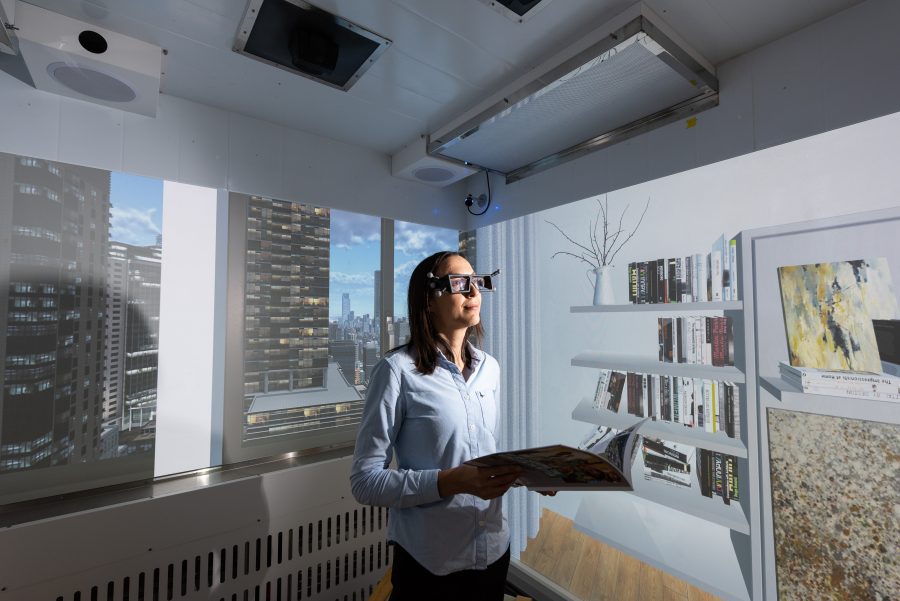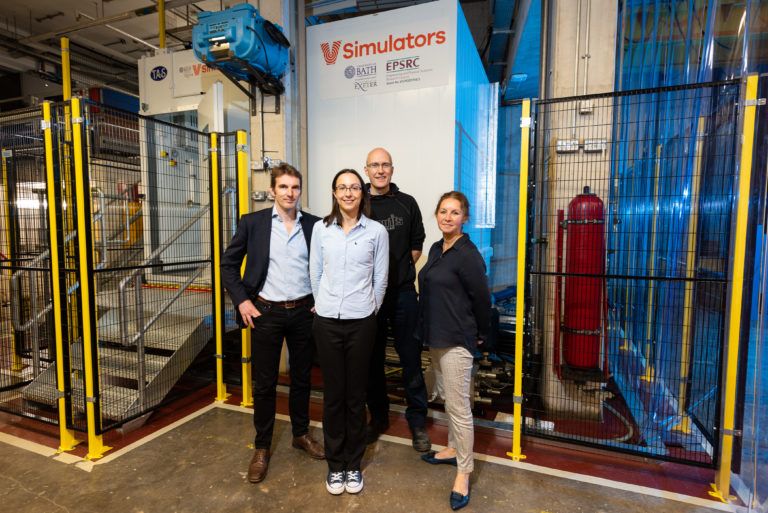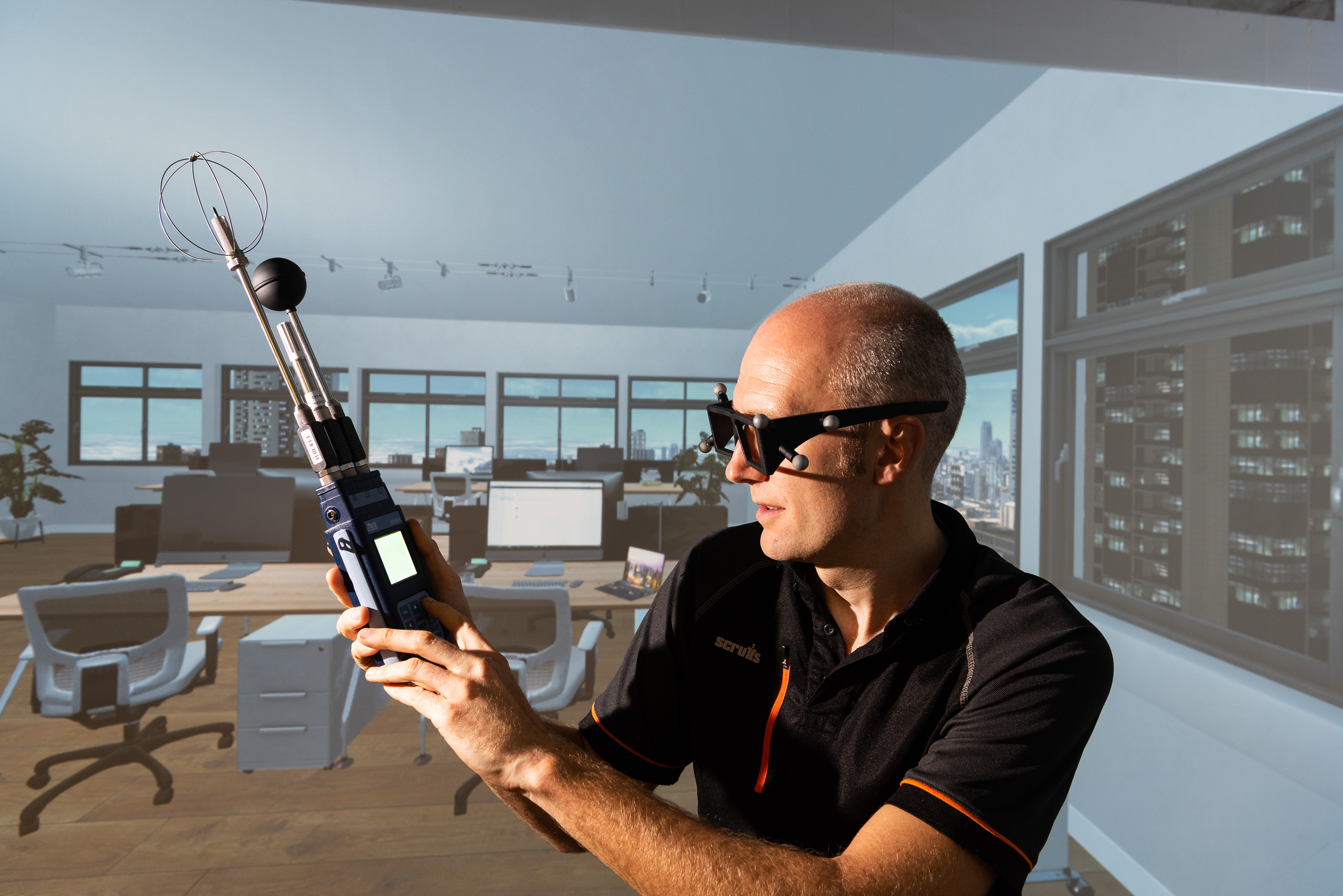Paris (France), 18th February 2020 – Aimed at providing a means of exploring how people experience and respond to their environment, VSimulators is a collaborative infrastructure project between the University of Bath, the University of Exeter and the University of Leicester.
Created with the help of VR specialist and integrator Antycip, which was responsible for producing and installing the projected virtual reality environments, this £4.8 million project funded by the Engineering and Physical Sciences Research Council (EPSRC) was designed to change the way structures are created and built. The two VSimulators based at Universities of Exeter and Bath will allow the engineering, infrastructure and architecture industries to investigate how humans respond to factors such as movement and vibrations in buildings and structures.
Additionally, with VSimulators, researchers are now able to analyse how certain movements and different environments affect people psychologically and physically. This will support collaborative research between a range of disciplines, including engineers, medics, physiologists, architects, bio-mechanists, sports scientist and psychologists, to explore how people respond to their surrounding environment.
The University of Bath VSimulators platform combines the use of projected virtual reality, a climate control chamber and a motion platform, to measure human factor responses from the built environment on people’s health, well-being and productivity.
The environmental chamber was designed and installed by Temperature Applied Sciences Limited (TAS), specialists in designing bespoke air conditioning systems and climatic control chambers, while the motion platform was designed and installed by Servotest Testing Systems Limited, specialists in designing custom servo-hydraulic mechanical testing solutions. Simulation and virtual reality specialist Antycip Simulation was responsible for the creation of the 3D VR environments. The content created is projected onto three walls to create a realistic of living and working in a building space, including a modern apartment and an office with external views of a low rise city or a dense, high rise city.
The University of Bath VSimulators platform compliments a second VR facility based at University of Exeter. Both facilities can be used independently, while it is anticipated that many researcher groups will seek to use both platforms as part of their research methodology.
VSimulators’ initial investigation into VR technology, while taking into account the physical constraints of the equipment, meant that the University of Bath was anticipating a wall-mounted display solution or one that projected on to three of the internal walls, rather than a headset-based VR.

“We had to include any required tracking hardware and software, as well as two internal virtual environments and two different external cityscapes all somewhere inside the room, without interfering with the simulation,” explained Dr Antony Darby, Head of Civil Engineering at the University of Bath. “The equipment mounted in the room also needed to tolerate the lateral movement and vibrations that the motion system provided, as well as work in hot humid environments - up to 40 degrees Celsius and 80% relative humidity.”
The Antycip team came up with a solution for this challenge. “Antycip proposed a hardware solution that had minimum intervention on the climate-controlled room, with short throw projectors mounted externally and lenses coming through the ceiling,” said Julie Lewis Thompson, Commercial Manager for VSimulators.
VSimulators worked closely with Antycip and Make Real in order to perfect the VR images. The translation from computer screens and headset VR to projection, particularly with aliasing effects, could be somewhat unpredictable, and required trial and error in order to get it right. “The team responded well to our comments and suggestions,” Antony Darby added. “As the scenes were developed and iterated, there were clear improvements both in terms of quality and realism of VR scenes and the performance of the VR system as a whole.”
Chris Waldron, UK regional manager at ST Engineering Antycip, commented: “Antycip was very pleased to be working with the University of Bath on this fascinating VSimulators project. As with many of the professional grade VR projects that we are asked to work on, this came with a set of unique challenges; the image size and nature requirements, the confined area, the angle of projection, and the need to cope with the movement of the platform, all restricted the projector and lens choices, plus created a set of related engineering prescriptions that we had to work to.”
For the future, both Antony Darby and Julie Lewis-Thompson can see the VSimulators being used throughout many research projects. Antony Darby said: “We initially anticipated significant interest and use by partners in our immediate community from the civil engineering, infrastructure and architecture fields, but we are now also receiving enquiries from partners in other fields such as virtual reality, healthcare technology, balance related issues, biomechanics and sports equipment.
“It’s almost certain that these new devices will help to both attract and retain students and academics at Universities of Bath and Exeter, particularly as the knowledge grows regarding what are now globally unique facilities. We have no doubt that these facilities will be used throughout many research projects to come.”
Picture credits: University of Bath






















